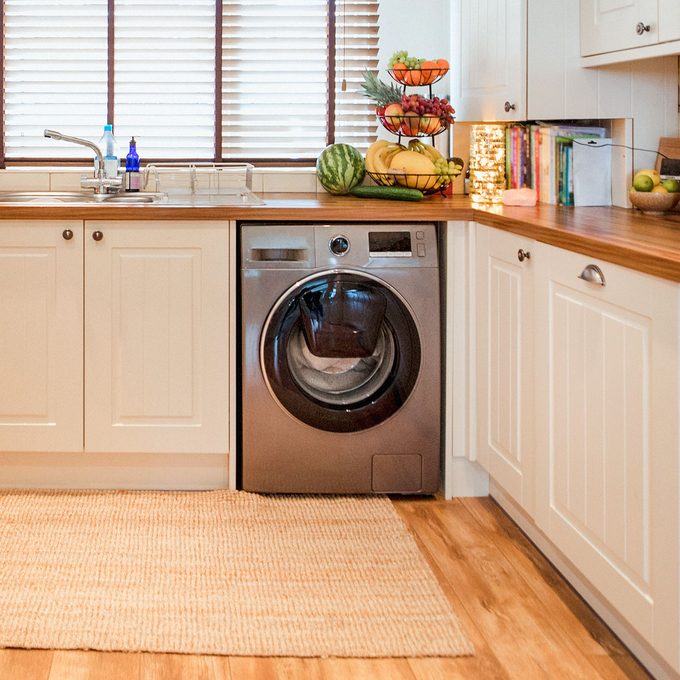Curious why British homes have washing machines in the kitchen? Learn how space, history, and environmental habits across Europe influence this common UK design choice.

Why Some Homes Have Washing Machines In Their Kitchens

If you’ve spent time in a British home or watched UK TV, you might have noticed something unusual: the washing machine is often in the kitchen. While this might seem odd to Americans used to dedicated laundry rooms, it’s perfectly normal in the UK—and across much of Europe. This setup reflects a blend of space constraints, historical design, and cultural habits.
On This Page
Limited Space and Older Infrastructure
Many UK homes—especially older ones—are smaller than their American counterparts and don’t have the extra room for a laundry area. Terraced and semi-detached houses, common across the country, typically lack basements or utility spaces. The kitchen, which already has plumbing and electricity, becomes the most logical spot for a washing machine.
Historically, UK homes weren’t built with multiple water access points. When washing machines became common in the mid-20th century, kitchens were the only rooms already equipped for appliances needing water and power. Bathrooms, on the other hand, are often off-limits for major appliances due to strict electrical safety regulations.
Kitchen Layouts and Design Norms
UK kitchens are often designed with under-counter space for a washing machine, similar to where a dishwasher might go. Building codes don’t require laundry rooms, and many homeowners prioritize extra living space or bathrooms instead. Even in modern homes, developers often follow traditional layouts to maximize efficiency and lower costs.
Environmental Awareness and Drying Habits in Europe

Another key difference between the UK (and much of Europe) and countries like the US is how people dry their clothes. While tumble dryers are common in the US, many European households rely on more environmentally friendly methods—like clotheslines, drying racks, or airing cupboards. Outdoor drying is a cultural norm, especially in warmer months, and helps reduce energy use and carbon emissions.
This environmental consciousness means there’s often less need for a large, separate laundry room packed with machines. Smaller washer-only units are common, and combination washer-dryers are gaining popularity for compact living. These practices align with broader European efforts to live more sustainably—something that continues to shape home design across the continent.



















